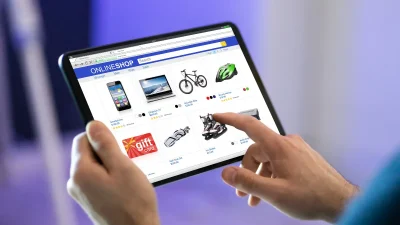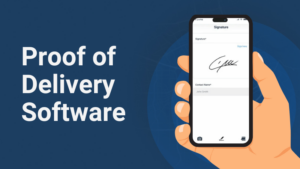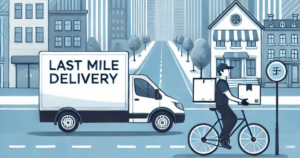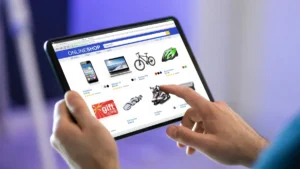The e-commerce battlefield is heating up. Both Google and Amazon have set their sights on finding the perfect balance between online shopping searches and improving customer experience.
Amazon took its AI-powered shopping assistant, Rufus out of beta and into the pockets of US shoppers. Meanwhile, Google has updated its search pages to now resemble Amazon-style category pages.
As these tech giants square off, retailers find themselves in the crossfire – but it might just be the best thing to happen to online shopping since next-day delivery.
Google’s Amazon-style category pages
Google’s search results for product queries now look similar to Amazon’s category pages, turning an ordinary search for an item into a virtual storefront.
Image credit: Search Engine Land
Users can browse for an item and compare it to other similar products without having to leave the Google Search page.
Some of the new changes include product grids at the top of the search page, along with filters on the left sidebar to refine search queries.
Shoppers will also notice expandable product information sidebars. Google will also add search results to a ‘In-Store Nearby’ section, for those who’d prefer to visit a brick-and-mortar shop instead.
Image credit: Search Engine Land
What this means for retailers
E-commerce businesses and retailers can benefit from the increased visibility this brings to their brands. Even smaller businesses now have a chance to appear in high-volume search queries.
The challenge here is that smaller businesses would need to get their marketing strategy on point and optimize their products for Google Searches.
To appear in Google’s product grids, retailers must provide accurate and comprehensive product information.
But the benefit of these enhancements means more accurate search results for shoppers, while the ‘In-Store Nearby’ feature could bridge a customer’s online and offline shopping experience. And this means more feet in store.
Amazon’s Google-style search experience
Meanwhile, Amazon rolled out its AI assistant – named Rufus, after the famous Amazon dog – to shoppers in the US. The feature had been in Beta testing since February this year.
Rufus is no ordinary chatbot.
It provides a Google-like search experience within Amazon’s platform, offering product recommendations and answering customer queries.
It can give detailed answers about specific items, based on product information and customer reviews. Beyond that, it can also answer more generic questions, such as “What do I need to make a soufflé?” or “What do I need for a summer party?”
Go deeper: Rufus: Amazon’s AI-powered answer to in-store shopping
About the author
Cheryl has contributed to various international publications, with a fervor for data and technology. She explores the intersection of emerging tech trends with logistics, focusing on how digital innovations are reshaping industries on a global scale. When she's not dissecting the latest developments in AI-driven innovation and digital solutions, Cheryl can be found gaming, kickboxing, or navigating the novel niches of consumer gadgetry.












